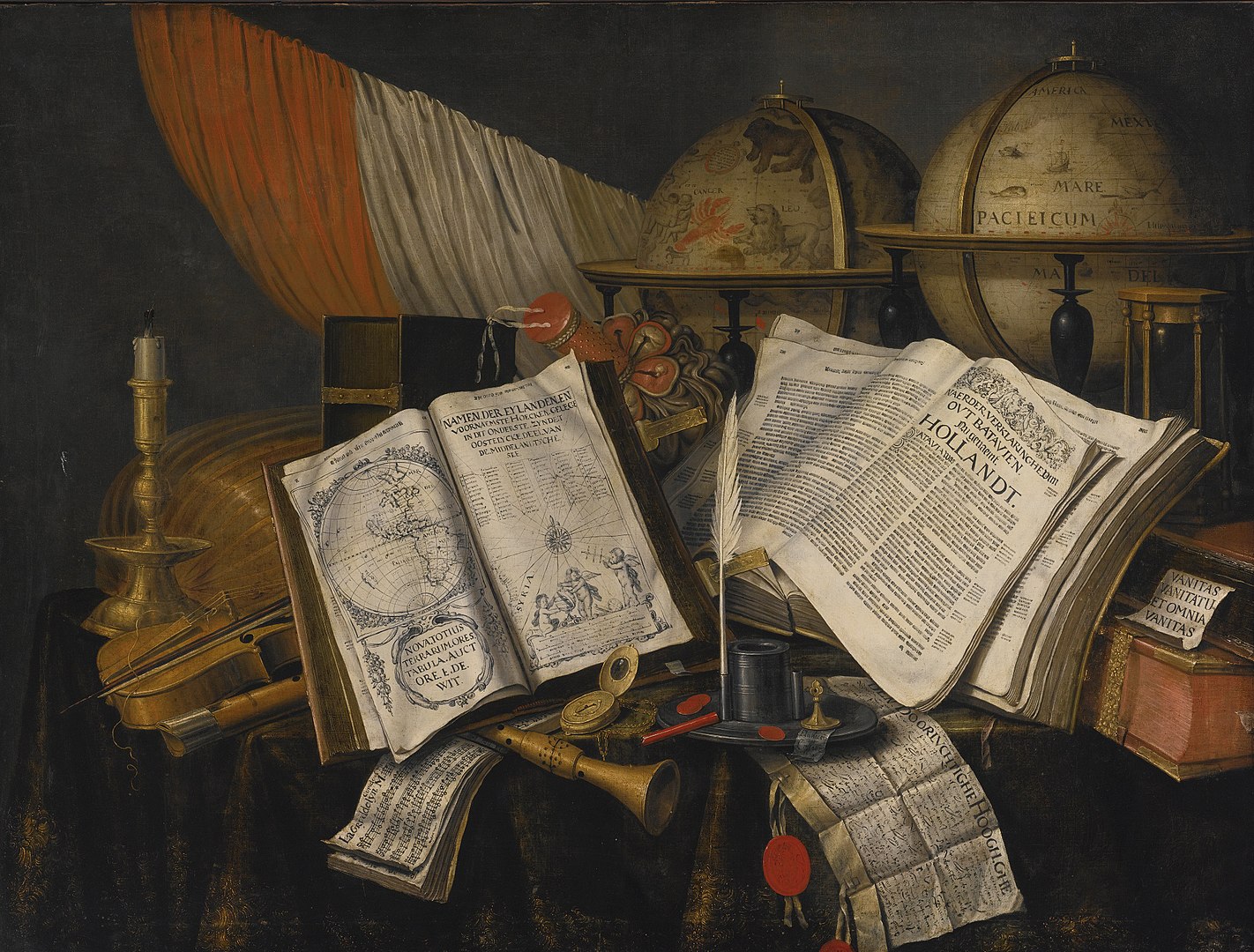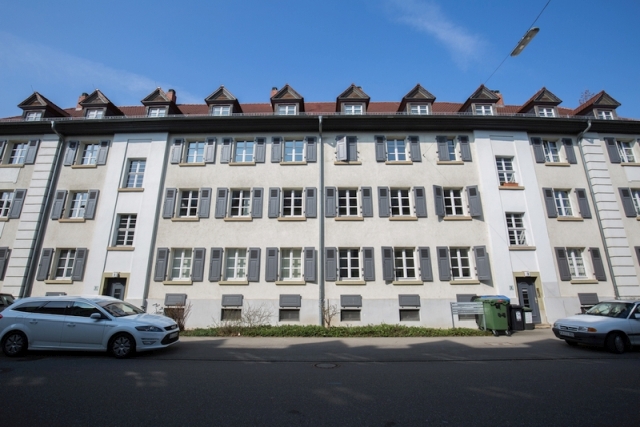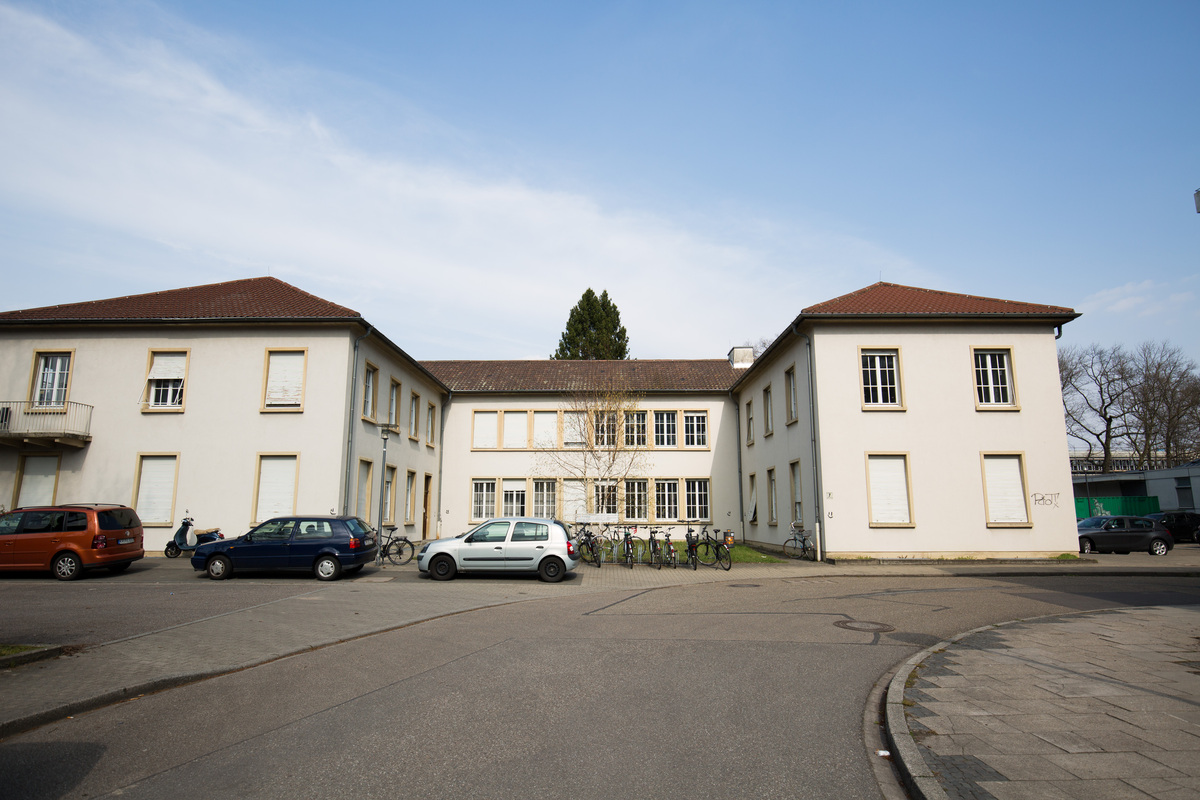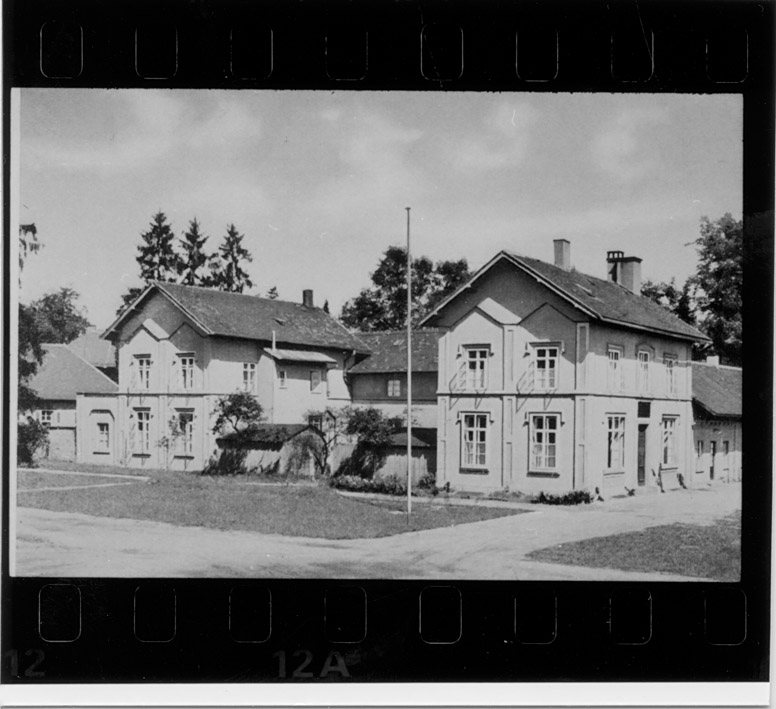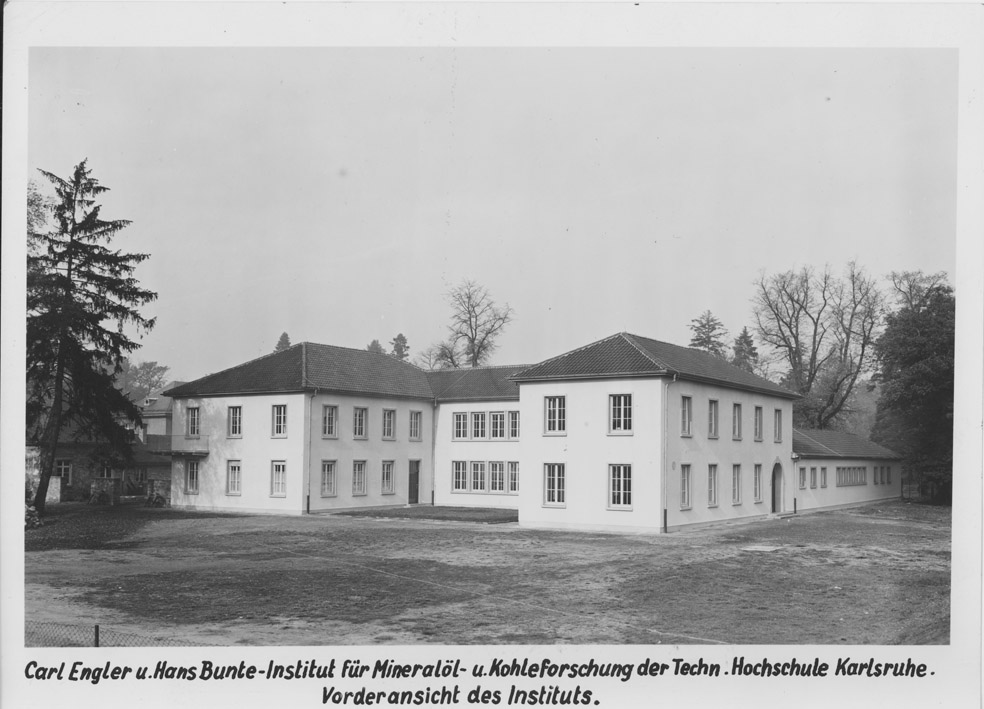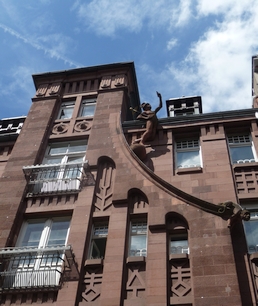Upon its foundation in 1825, the subject of history was initially little more than part of the teaching canon for the upper classes of the local secondary school which had been incorporated into the new institution. Gradually, history and literature became established as "general education elective subjects" in the educational canon of future engineers, whereby the lack of historical content was increasingly perceived as a shortcoming.
A separate chair for history and literature was established in 1860, promoted not least by the Grand Duke of Baden, Frederick I. The chair was created in 1861. In 1861, and the liberal historian and publicist Hermann Baumgarten was appointed, who held office very successfully until 1872 and also attracted Karlsruhe's educated middle classes to his lectures. Baumgarten's successors were David Müller from 1872-1877, Adam Pfaff from 1878-1885, and finally Arthur Boehtlingk from 1885-1919. After World War I, the previously combined subjects were separated. From 1919 to 1922, Hermann Wätjen from Heidelberg served as the first Ordinary Professor of History. He was followed by Franz Schnabel (1887-1966), author of "German History in the 19th Century," who had been specially accredited with a habilitation degree in higher education.
Schnabel saw his task as a historian not only to impart historical knowledge to technicians and engineers, but also to raise awareness about the influence of technology and technical change on history and society. In 1936, the Nazi Minister of Education dismissed him: ostensibly because the subject was dispensable, but in fact because Schnabel was unacceptable for political reasons. In 1945, the American occupation forces appointed him head of the Department of Culture and quasi "Minister of Culture" in North Baden, in which capacity Schnabel was responsible for the reconstruction of schools and universities. Until his departure for Munich in 1947, he also lectured at the Fridericiana.
From 1951 to 1962, Walther Peter Fuchs taught in Karlsruhe, followed by Thomas Nipperdey until 1967. In 1969, Walter Bußmann, another renowned historian, was appointed to the TH, which had in the meantime advanced to university status. During the term of office of Bußmann's successor Rudolf Lill (1983-2000), the department underwent two seminal changes. These were the establishment of the History of Technology under Rolf-Jürgen Gleitsmann-Topp in 1990 and the foundation of the Research Center for Resistance to National Socialism in the German Southwest in 1992, initially under the management of Michael Kißener and later under Rolf-Ulrich Kunze.
From 2001 to 2007, Prof. Dr. Peter Steinbach taught at the department. In 2001 and 2006, respectively, Rolf-Ulrich Kunze and Kurt Möser joined him in Karlsruhe and have been working at the Department as associate professors since 2011. In 2016, Marcus Popplow was appointed to the professorship for the history of techno-scientific civilization, and from 2017 to 2019 Heike Weber held the professorship for technology culture studies.
Read more about Franz Schnabel
Franz Schnabel - A biographical overview
Author: Martin Benjamin Ullmann
Today, the Franz Schnabel House on KIT Campus South is one of the central locations for many students and lecturers in the humanities and social sciences. But who was Franz Schnabel, after whom this place is named?
Franz Bernhard Gerhard Schnabel was born in Mannheim on December 18, 1887 and grew up there in a middle-class Catholic family. After graduating from high school, he studied history and philology in Heidelberg and Berlin, which he completed with a doctorate in 1910. Schnabel then worked as a teacher in Mannheim and Karlsruhe for several years, interrupted by his call-up for the First World War, and wrote a textbook for history lessons. After World War I, his career took him to the Technical University of Karlsruhe, the predecessor institution of today's KIT. He habilitated in 1922 and was appointed to the Chair of History in the same year. At that time, it was not yet possible to study history at the Technical University, so Schnabel mainly taught historical content to students of technology and natural sciences as well as to an interested urban audience.
In his teaching and research, Franz Schnabel was primarily concerned with the development and achievements of the German bourgeoisie from the Middle Ages to the present day, as well as with 19th century German history in general. Schnabel also worked on church history and local history in the Upper Rhine region. Inspired by his time at the Technical University of Karlsruhe, Schnabel also devoted himself to questions of technical history, in particular the development of technical education. Today, Franz Schnabel is regarded as a pioneer of modern technological history. His main work is the series "German History in the 19th Century". Four volumes were published between 1929 and 1937, in which he dealt with intellectual developments, political trends, technical and scientific innovations and religious developments. However, the complete work remained unfinished. In terms of content, the series ended before the revolution of 1848/49. Schnabel's work, with its modern approaches, was widely read, but also criticized by contemporary historians.
Franz Schnabel also took on a certain outsider role in the historians' guild of the time due to his clear commitment to the Weimar Republic and democratic values. Schnabel saw the federal and constitutional republic as the result of the liberal currents of the 19th century. Schnabel was close to the Catholic-conservative Center Party. During the Weimar Republic, Schnabel was already advocating the creation of a federal European confederation, which he considered to be based on Franco-German understanding. After the National Socialists came to power in Germany, Franz Schnabel was dismissed from his position at Karlsruhe Technical University in 1936 after 14 years of teaching because of his political stance. A planned publication of the fifth volume of "German History in the 19th Century" was prevented by censorship.
After the war, Schnabel was responsible for the reconstruction of the Baden school and education system between 1945 and 1947 as "State Director for Education and Culture". After another brief period at the TH Karlsruhe, Schnabel accepted a position at the University of Munich in 1947. There he held positions in science policy, including becoming President of the Historical Commission of the Bavarian Academy of Sciences in 1951. Schnabel remained closely connected to the world of the university even after his retirement in 1962. Franz Schnabel died in Munich on February 25, 1966.
Schnabel's memory is kept alive through honors, such as the "Kurpfalz-Stiftung Franz Schnabel" or the "Franz Schnabel Memorial Medal", which has been awarded since 1991 for outstanding achievements in history at school. Since 1992, the Franz Schnabel House at his former place of work has also commemorated the professor. Schnabel's perspectives on the history of politics, ideas and also technology still form the cornerstone of teaching and research at the Department of History at KIT today.
Further reading
Gall, Lothar: Schnabel, Franz Bernhard Gerhard, in: Neue Deutsche Biographie (Vol. 23), ed. by H. Hockerts, Berlin 2007, pp. 273-274.
Hertfelder, Thomas: Franz Schnabel and German historiography. Geschichtsschreibung zwischen Historismus und Kulturkritik (1910-1945), 2nd vol., Göttingen 1998.
Lönne, Karl-Egon: Franz Schnabel, in: German Historians (vol. IX), ed. by H.-U. Wehler, Göttingen 1982, pp. 81-101.
More about the Department history
About the history of the locations of the Department of History
Janina Ochs
Neuer Zirkel (Building 20.54 and 20.53)
The so-called Winkelwohnblock at the intersection of Engesserstraße and Neuer Zirkel on the KIT campus was designed by the Baden architect Fritz Hirsch. This Jewish civil engineer worked in Karlsruhe from 1913 and was responsible, among other things, for the restoration of the palace and palace garden in Schwetzingen, the palace and court church in Raststatt, the city church and mint ["Alte Münze"] in Karlsruhe, and the cathedral in Constance. From 1920 he was an honorary professor at the TH Karlsruhe, teaching architectural history and Christian art. In 1933 the university withdrew Hirsch's lectureship - ostensibly for "budgetary reasons" - and he was forced out of all offices by the National Socialists. He died in July 1938.
The Winkel apartment block was built in the early 1920s. The property is located on the former stable grounds of the Karlsruhe Palace, which in the second half of the 19th century housed not only the court stables, but also the court building office and the apartments of court officials. Due to the housing shortage after the First World War, modern residential buildings were erected there - again as a settlement for officials.
At the end of the 1960s, the complex was actually slated to be demolished and replaced by a new building. The simultaneous emergence of computer science as a newly established subject at the Technical University of Karlsruhe prevented this plan. The computer science department was housed in the Winkel apartment blocks. A good twenty years later, it was concluded that the building fabric was too valuable to demolish. At the same time, it was decided that apartments that became vacant should be made available to the Technical University. Thus, the premises of computer science, economics and the examination secretariat of the Faculty of Humanities and Social Sciences were located there. In 1996, the Institute of History with the History of Technology Department moved into premises in Neuer Zirkel 3. Since the summer semester of 2016, additional offices of the Institute have been located in Neuer Zirkel 1 and Douglasstr. 24.
The Franz Schnabel House (Building 30.91)
The Franz Schnabel House contains the seminar rooms of the Institute of History. The building is located on the grounds of the former pheasantry on the edge of the Karlsruhe Schlosspark. In the immediate vicinity is the Fasanenschlösschen, which was completed in 1765 and has been the seat of the State Forestry School since 1926. The present Schnabel House was built in 1857 as an extension of the pheasantry and as a residence for the pheasant hunter. Attached to it were a hatchery for pheasants and a cowshed. Used only briefly in this capacity, it was a residence for civil servants in the early 20th century.
After the National Socialists came to power, the Baden Ministry of Finance made the building available rent-free to the Nazi Student Union. It was remodeled and opened as a "Kameradschaftshaus" in 1934. Another construction measure shortly thereafter also adapted the exterior appearance of the house to conform to the ideals of National Socialist architecture. The building was named after the Reichsführer of the NS-Studentenbund, Oskar Stäbel from Karlsruhe. The students, who were accommodated at a low rent, were to be educated according to National Socialist principles. In the emphatically plainly furnished house, which provided space for about 50 to 60 students, the students were offered three meals, a (loft) bed and a closet.
After World War II, the building was thoroughly renovated and remodeled. In 1955, the Engler-Bunte Institute for Mineral Oil and Coal Research of the Technical University of Karlsruhe moved into the premises. Today's seminar rooms on the first floor served as machine and workshops. Work was carried out with heavy machinery and a wide variety of chemicals. At the end of the 1980s, the Faculty of Humanities and Social Sciences moved into the building. In 1992, it was given the name "Franz Schnabel House" - after the author of "German History in the 19th Century" and former professor of history at the TH Karlsruhe. Schnabel was one of the first political historians to include developments in the history of technology in his works. These two fields continue to be the focus of teaching and research at the Department of History today.
Douglasstraße 24 (Building 09.20)
Additional offices have also been located near the city center at Europaplatz, in the direct vicinity of the former main post office, now the "Postgalerie" shopping center. However, only the listed Art Nouveau facade, the staircase and elements of the rooms facing the street remain from the original structure of the building.
The facade dates from 1906, when the Karlsruhe developer August Hörner acquired the property together with the dilapidated smithy and store. The old buildings were demolished and a modern residential and commercial building was erected. The Art Nouveau façade is characterized by the figure of Mercury as the god of commerce. Balancing on a globe, he seems to follow a fleeing monkey - the unusual iconography is of high monumental value.
The building served as a residence until the mid-1980s. One of the residents of a student flat-sharing community at the time later became a professor at a Berlin university. In the course of a core renovation and the construction of an underground parking garage, the floors were significantly expanded by incorporating the newly constructed neighboring building. Since then, the building has housed medical practices, law firms and offices.

